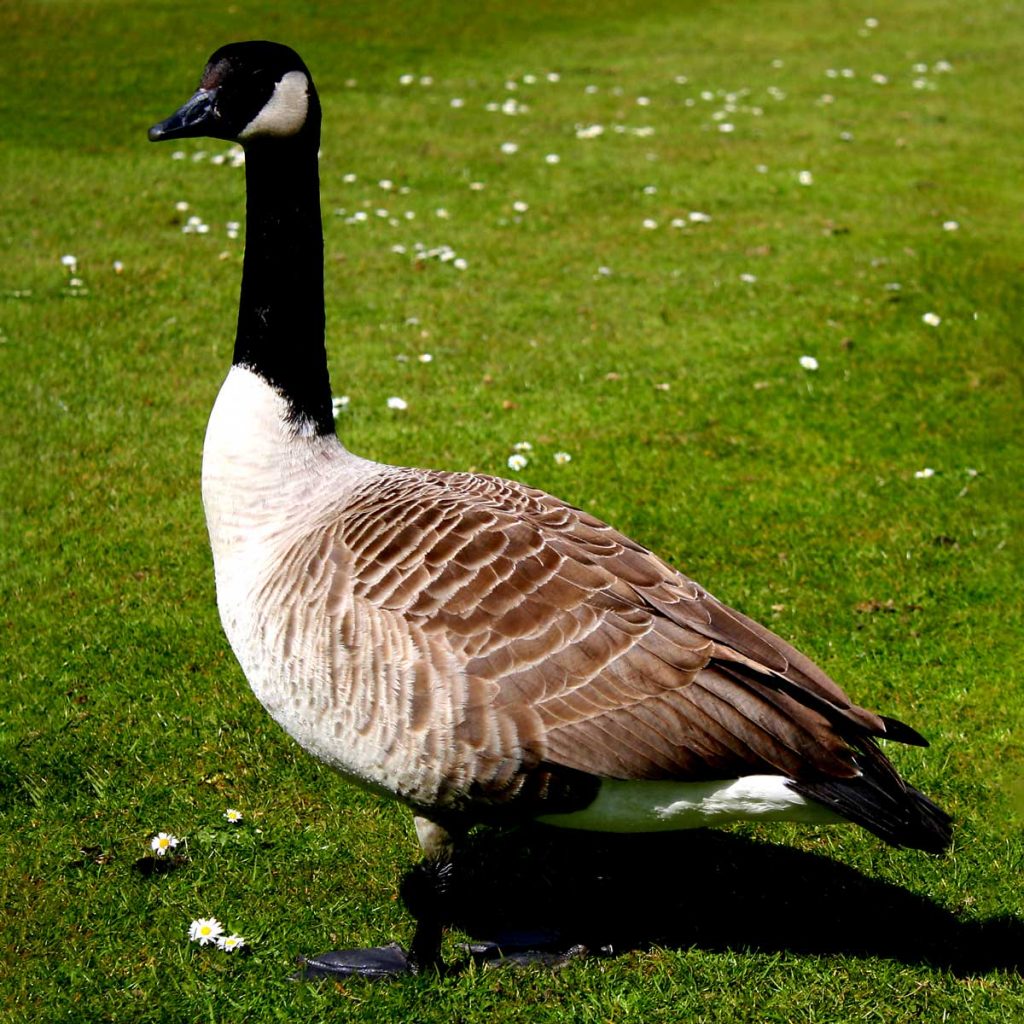
Birds / Canada Goose
Information for Juniors
Canada Goose
- They are not a native bird.
- Head and Neck are black
- Males can weigh up to 6.5kgs – females less
- They were introduced into NZ in the 1900’s and were protected until about 1957.
- They can be seen in most parts of NZ particularly around coastal lakes and lagoons where their population is increasing.
- Most flocks these days are multi-generational with one breeding pair having a family of 20 birds within a year.
- The male and female stick together with the female sitting on the eggs for about 1 month until the eggs hatch.
- The male (gander) defends the territory around the nest.
- The nests are on the ground hidden amongst the bullrushes and lined with down.
- An average of 5 eggs per nest
- The eggs are laid around September and sometimes a 2nd clutch around January.
- The chicks take 2 months before they can fly
- While largely herbivorous, geese can eat a wide range of grasses and grains and consume small fish and insects.
- Five geese may consume the same amount of grass as one sheep,
- On the water, these geese feed from bottom sediments and aquatic plants.


Information for Junior Secondary
Canada Goose
- They are not a native bird.
- Head and Neck are black
- Males can weigh up to 6.5kgs – females less
- They were introduced into NZ in the 1900’s and were protected until about 1957.
- They can be seen in most parts of NZ particularly around coastal lakes and lagoons where their population is increasing.
- Most flocks these days are multi-generational with one breeding pair having a family of 20 birds within a year.
- The male and female stick together with the female sitting on the eggs for about 1 month until the eggs hatch.
- The male (gander) defends the territory around the nest.
- The nests are on the ground hidden amongst the bullrushes and lined with down.
- An average of 5 eggs per nest
- The eggs are laid around September and sometimes a 2nd clutch around January.
- The chicks take 2 months before they can fly
- While largely herbivorous, geese can eat a wide range of grasses and grains and consume small fish and insects.
- Five geese may consume the same amount of grass as one sheep,
- On the water, these geese feed from bottom sediments and aquatic plants.


Information for Senior Secondary
Canada Goose
- They are not a native bird.
- Head and Neck are black
- Males can weigh up to 6.5kgs – females less
- They were introduced into NZ in the 1900’s and were protected until about 1957.
- They can be seen in most parts of NZ particularly around coastal lakes and lagoons where their population is increasing.
- Most flocks these days are multi-generational with one breeding pair having a family of 20 birds within a year.
- The male and female stick together with the female sitting on the eggs for about 1 month until the eggs hatch.
- The male (gander) defends the territory around the nest.
- The nests are on the ground hidden amongst the bullrushes and lined with down.
- An average of 5 eggs per nest
- The eggs are laid around September and sometimes a 2nd clutch around January.
- The chicks take 2 months before they can fly
- While largely herbivorous, geese can eat a wide range of grasses and grains and consume small fish and insects.
- Five geese may consume the same amount of grass as one sheep,
- On the water, these geese feed from bottom sediments and aquatic plants.


Canada Goose Activities
- Take a good photo
- Write a paragraph in which you describe the different types of ‘call’ that the geese use.
- One breeding pair lays 5 eggs, I chick dies and 2 males and 2 females survive. The next breeding season all females lay another 5 eggs but only 4 of each clutch survive. Set out the equation to show how many Canadian geese are there now.
- What will the number be at the end of the next season? Study the photo and sketch a copy with coloured pencils.
